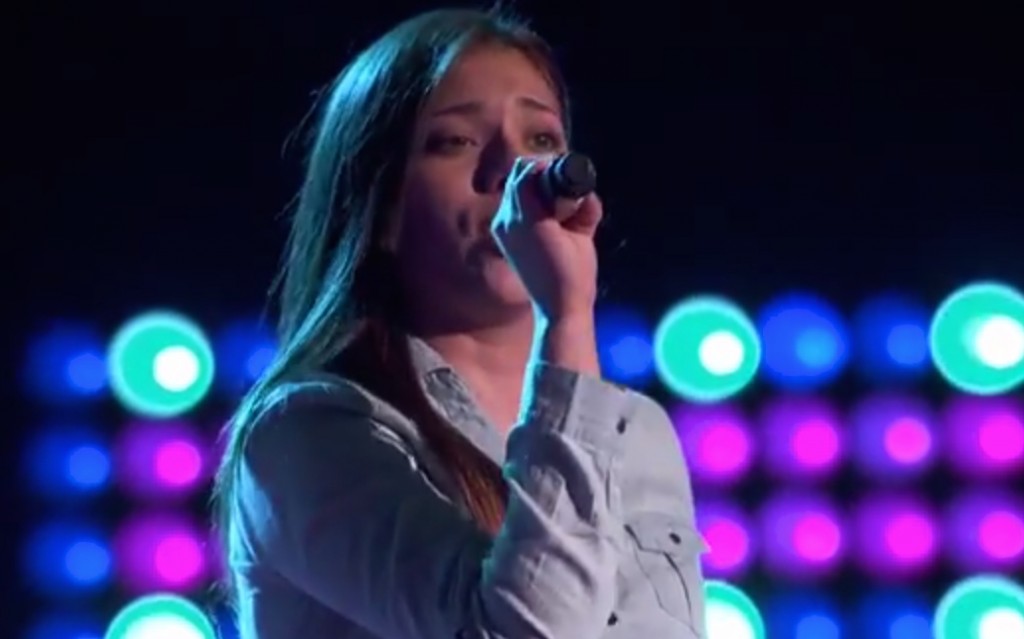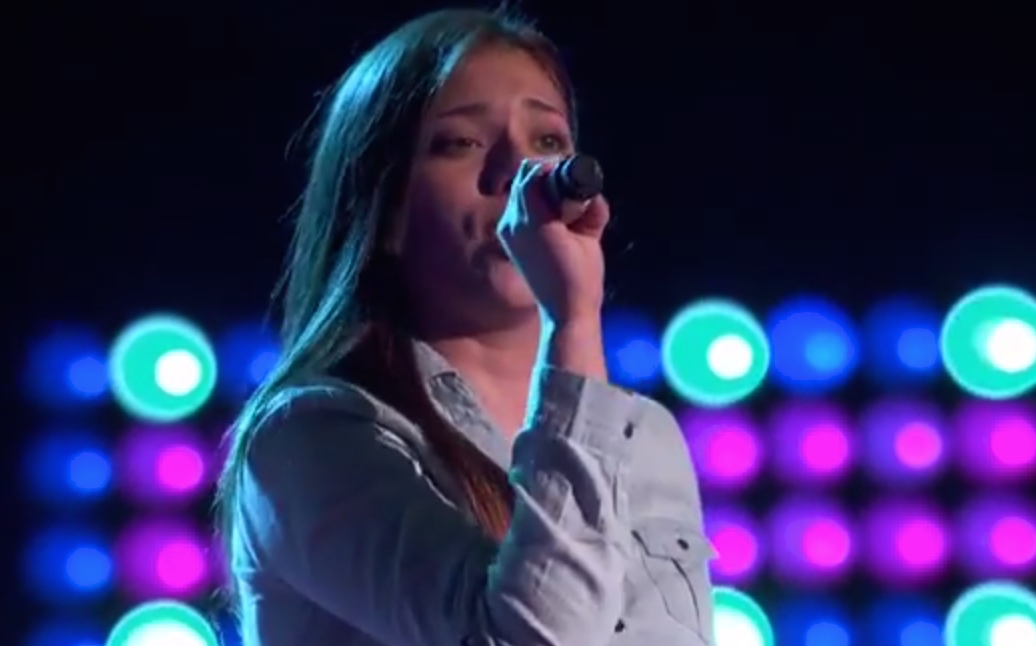
A 15 year old Wendover girl needs her home town’s help in progressing to the next stage of La Voz Kids singing competition.
Jacqueline Collazo stunned the audience and the judges in the first round of La Voz Kids singing contest. cut and paste link to see audition: https://www.youtube.com/watch?v=eIXDU8x8MJk
 Produced by the American Spanish-language network Telemundo La Voz Kids features contestants, ages 7 to 15. Prizes include $50,000 cash for their education and a recording contract with Universal Music Group.
Produced by the American Spanish-language network Telemundo La Voz Kids features contestants, ages 7 to 15. Prizes include $50,000 cash for their education and a recording contract with Universal Music Group.
Collazo was one of thousands of hopefuls to win an audition and to progress to the second round.
Voting which ends Saturday will determine if the young West Wendover High School freshman will make it to the next round.
As of press time Wednesday night Jacqueline was in third place according to the program’s web page. But since her story appeared Thursday morning both on line and on the street in the High Desert Advocate her number surged and carried her to first place as of Friday afternoon.
 To vote for Jacqueline copy and paste this link:
To vote for Jacqueline copy and paste this link:
http://www.telemundo.com/shows/2015/04/20/cual-concursante-te-impresiono-en-la-6ta-noche-de-audiciones-ciegas-de-la-voz-kids
Or click on her button ad at the top left corner of the High Desert Advocate’s web site www.coyote.tv.com.
Multiple voting is encourage by the contest rules.
Jacqueline is the oldest of four siblings and is the daughter of Veronica Villa.She was bvorn and raised in Wendover.
The Voice is a reality television singing competition franchise. It is based on the reality singing competition The Voice of Holland, which was originally created by Dutch television producer John de Mol. Many other countries have adapted the format and began airing their own versions since 2011. It has become a rival to the Idols franchise, and The X Factor.
 Contestants are aspiring singers drawn from public auditions. The show’s format features four stages of competition. The first is the blind auditions, in which the four coaches, all noteworthy recording artists, listen to the contestants in chairs facing opposite the stage so as to avoid seeing them. If a coach likes what they hear from that contestant, they press a button to rotate their chairs to signify that they are interested in working with that contestant. If more than one coach presses their button, the contestant chooses the coach he or she wants to work with. The blind auditions end when each coach has a set number of contestants to work with.
Contestants are aspiring singers drawn from public auditions. The show’s format features four stages of competition. The first is the blind auditions, in which the four coaches, all noteworthy recording artists, listen to the contestants in chairs facing opposite the stage so as to avoid seeing them. If a coach likes what they hear from that contestant, they press a button to rotate their chairs to signify that they are interested in working with that contestant. If more than one coach presses their button, the contestant chooses the coach he or she wants to work with. The blind auditions end when each coach has a set number of contestants to work with.
Coaches will dedicate themselves to developing their singers mentally, musically and in some cases physically, giving them advice, and sharing the secrets of their success.
The contestants who successfully pass the blind auditions proceed to the battle rounds, where the coaches put two of their own team members against each other to sing the same song together in front of a studio audience. After the vocal face-off, the coach must choose only one to advance. If no specific winner can be identified the competition turns to a game of fate via a coin toss. In some versions, there are steals where opposing coaches can steal a contestant who was voted off by their own coach by pressing their button. As in the blind auditions, if more than one coach presses their button, the contestant chooses which coach they want. Each coach has a set number of steals (usually one or two).
 In some versions, the winners of the battle rounds proceed to the knockout rounds. As in the battle rounds, coaches pit two of their own team members to compete against each other. This time, the contestants choose their own song to perform individually while the other watches and waits. After that, the coach chooses one to advance while the other is sent home. At the end of the knockout rounds, the strongest members of each coach’s roster proceed to the live stage shows. In this final performance phase of the competition, the top contestants from each team compete against each other during a live broadcast. The television audience vote to save one contestant on each team, leaving the coach to decide on live television who they want to save and who will not move on. In the next round, the public chooses between the two artists left on each team, and the coach also has a vote that weighs equally with the public vote.
In some versions, the winners of the battle rounds proceed to the knockout rounds. As in the battle rounds, coaches pit two of their own team members to compete against each other. This time, the contestants choose their own song to perform individually while the other watches and waits. After that, the coach chooses one to advance while the other is sent home. At the end of the knockout rounds, the strongest members of each coach’s roster proceed to the live stage shows. In this final performance phase of the competition, the top contestants from each team compete against each other during a live broadcast. The television audience vote to save one contestant on each team, leaving the coach to decide on live television who they want to save and who will not move on. In the next round, the public chooses between the two artists left on each team, and the coach also has a vote that weighs equally with the public vote.
Finally, each coach will have his/her best contestant left standing to compete in the finals, singing an original song. From these four, one will be named “The Voice”—and will receive the grand prize of a recording contract.
 In some versions, all contestants perform each week and only the public’s vote determines which contestants advance in the competition, a format similar to both Idol and The X Factor. This means that any contestant can be eliminated and no coach is guaranteed a spot in the finals.
In some versions, all contestants perform each week and only the public’s vote determines which contestants advance in the competition, a format similar to both Idol and The X Factor. This means that any contestant can be eliminated and no coach is guaranteed a spot in the finals.
One of the cornerstones of The Voice format is the social media participation via Twitter, Facebook and the especially designed platform “connect.” Users are able to log in via their Facebook account and retrieve background information about the show. The platform also offers the possibility to stream the show online as well as to vote, interact with friends and to discuss various topics and questions asked by the producers throughout the show.
